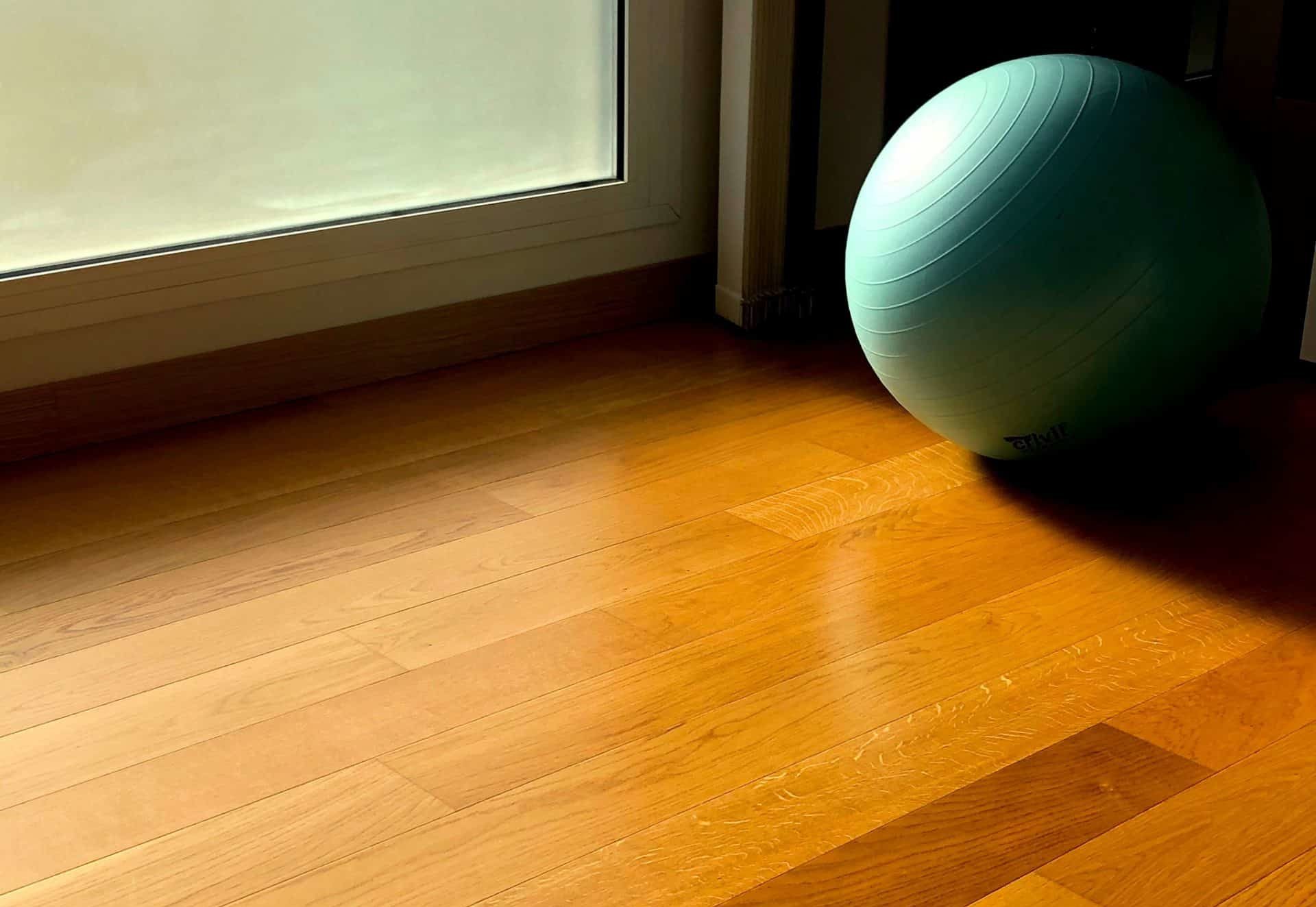This post contains affiliate links.
Engineered hardwood flooring is more dimensionally stable than solid hardwood floors. This means that unlike solid hardwood floors, they can resist possible expansion or contraction due to humidity changes. It makes them superior to solid hardwood floors in that aspect but do you still have to acclimate engineered hardwood flooring prior to installation?
It is still recommended by manufacturers to acclimate engineered hardwood floors at least 48 hours or until they reach their acceptable moisture content. Do this inside the room where they will be installed. Its plywood core helps mitigate dimensional changes but it does not totally eliminate it.
Each engineered hardwood floor manufacturer has their own recommendations and instructions as to how to acclimate their own product and is best to follow them as best you can to avoid any unexpected issues in the future.
What Would Happen If you don’t Acclimate Engineered Hardwood Floors?
Wood is considered a hygroscopic material, which means that it will naturally absorb moisture in its environment. This will result in dimensional changes when it has absorbed or depleted enough moisture to or from itself. Moisture can come from many sources but is commonly occurring in the air or humidity.
Engineered wood floors are made with a plywood core composed of 3-5 layers of ply cross-layered on top of each other. So unlike solid hardwood floors, engineered wood floors can resist dimensional changes, usually happening across its width, better. Though it does resist extreme dimensional changes, small amounts of changes will still occur when changes to its environment are extreme.
Environmental conditions vary from region to region and depending on where the engineered wood boards or planks came from and where it is going to be installed, there might be extreme differences between the two. The location of the warehouses where the boards were originally stored could be hot and humid and delivered to a house that is cool and dry.
Acclimation will naturally happen to wood materials. It will slowly adapt to its environment and will adjust in terms of moisture content. So an engineered wood floor that came from a hot and humid warehouse will have a high moisture content. And once it enters the house that is cool and dry, it will slowly start releasing the excess moisture until it reaches equilibrium with the house’s environment. This will cause the boards to shrink in size.
If you didn’t acclimate the engineered wood floors fully and continued installing it to your room, you might end up with floorboards with joint gaps or some buckling in the future. The boards or planks will acclimate no matter what. If it was installed with excess moisture content, it will shrink in size over time creating gaps. On the other hand if it was installed with low moisture content as compared to humidity levels of the room, it will absorb some of the moisture and will expand, creating crowning or buckling in the joints.
The expansion or contraction that might happen in your engineered wood floors can be extreme that it might cause permanent damage. This is the reason why most manufacturers still recommend going to the process of acclimation first prior to installation.
How to Acclimate Engineered Hardwood Floors?
It’s very important to read the product’s manual or instruction fully. In terms of acclimation, they will have a recommended method as to how to properly acclimate and install the boards. This includes how to stack or cross-stack the boards.
Below are some rules of thumb as to how to fully acclimate engineered hardwoods, but again read the manufacturer’s recommendations as they will have different procedures on doing this.
- Never have the boards delivered during inclement weather conditions. Extreme conditions in humidity and temperature may affect the engineered wood flooring.
- If the room is not yet ready for the engineered wood floor, make sure you have proper storage, that is not exposed to the weather, and with a controlled environment to store the flooring temporarily. A controlled environment means that you need to have your heating or cooling running as to how they will be used during normal living conditions. This will allow the engineered wood floor to start adjusting to the house’s environmental conditions.
- Make sure the room where you will install the engineered wood floor is ready. Never acclimate the engineered hardwood floors too soon in a room that has just been painted or drywall that has just been put up. Any moisture coming from several construction compounds, such as in paints or drywall, may still be present in the room. This will be absorbed by the boards and may not acclimate properly. Allow the room to stabilize for at least 5 days or for all elements to be dry before you place the carton of engineered wood floors inside.
- The room should maintain its normal living conditions 5 days prior to acclimation. If you plan to run your heating or AC all year round in the room where the engineered wood floors will be installed, run it for at least 5 days. The thermostat should be maintained at the expected average normal conditions. This will allow the flooring to acclimate correctly to actual living conditions.
- Continue to run the systems normally during the acclimation and even after the installation. This will mitigate any changes that might happen in the floorboards due to humidity or temperature changes.
- Room Temperature should be between 65 and 75 deg. Fahrenheit or between 18 and 23 deg. Celcius with a Relative Humidity of 35% – 55%. Maintain these values a minimum of 5 days prior to the delivery of the floor. Use a proper room hygrometer to make an accurate reading.
- Open ends of the carton to allow air to circulate around the floorboards. When room conditions have been met, you can start placing the cartons inside the room with the cartons’ ends open. You can stack them no more than 3 cartons high and leave them to acclimate. If the boards are inside plastic containers, remove the plastic to let the air move around the wood boards.
How Would you Know if the Engineered Hardwood Flooring has Acclimated and is Ready for Installation?
Once you start the process of acclimation to your engineered hardwood flooring, you need to know when it has acclimated and is ready for installation. Some floor installers would say that 2-3 days is enough for the wood floors to acclimate fully. The better way to determine if the engineered wood floors are ready is by measuring their moisture content.
Below are the things you need to do to determine if your engineered wood floors have acclimated:
- Start with taking readings of your wood subfloor. You need a good pin-type moisture meter to get a good reading. Take readings a minimum of 20 times per 1,000 sq. ft. or 100 sqm. and average the results. Usually, a subfloor with less than 12% moisture content is ready to work on. The moisture content from region to region and is best to check with the engineered wood floors manufacturers for the recommended numbers.
- Measure several engineered wood floorboards across several carton boxes. Get the average moisture content reading.
- 3″ or thinner boards should have no more than 4% difference of moisture content between it and the wood subfloor and no more than 2% difference for boards wider than 3″.
Engineered wood floors have acclimated once they reach their equilibrium with the home that is kept at average living conditions. If you get readings consistent to the list above, then you can start with the installation.
Again, recommended moisture content and readings may vary depending on geographic locations. It will be best to consult with your product’s manual or the manufacturer’s standards.
Other Tips to Prolong Life of your Engineered Wood Floors
Changes in the home’s environment may still affect your engineered wood floors. Although they were made to withstand any environmental changes, extreme changes can still cause the flooring to adjust, move, or shift in size.
Something to keep in mind that a consistent environment plus a full acclimated engineered wood floor will result in a very stable floor. So for some climates, humidifiers or dehumidifiers, air-conditioning systems, and other climate control might be needed to keep the environmental conditions consistent.
Avoid opening windows when there is an extreme difference in humidity and temperature between the inside and outside the room. Parts of the engineered wood floors near the window might get affected.
Avoid running a burning hot stove near your wood floors which may cause parts of the floor to dry up and to start shrinking.
All About Materials is a participant in the Amazon Services LLC Associates Program, an affiliate advertising program designed to provide a means for sites to earn advertising fees by advertising and linking to Amazon.com. We also participate in other affiliate programs which compensate us for referring traffic.

